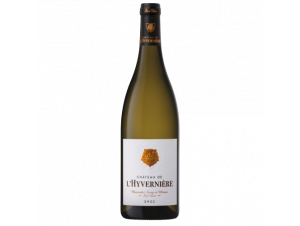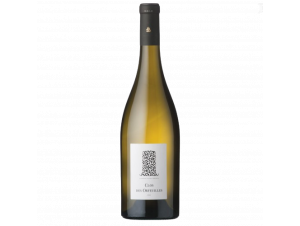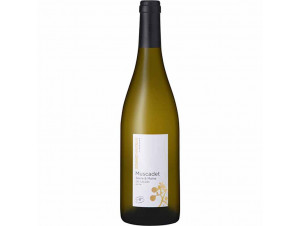You have no items in your shopping cart.
Wine Muscadet-Sèvre-et-Maine
-
Top Selling
-
Top Selling-20%
-
Top Selling
- -26%
- -23%
- -17%
The funny story of Muscadet
As in many regions of France, we owe the tradition of vine growing to the Romans who invaded Gaul. For the Nantes region, it is to Probus, the emperor who reigned from 276 to 282, that we owe the first plantings made by his soldiers. The monks of the abbeys of the Middle Ages took over and the Loire wines continued to prosper without any problems. So far, nothing very orignal, but then the first vines of what was to become Muscadet were planted and they were... Burgundian!
In fact, it was the melon, a plant coming from Burgundy, that was used. Melon because its round leaves evoke the melon and Muscadet, because its floral and slightly musky aromas are reminiscent of the muscatel wines that came from Cyprus and were renowned at the feudal courts. Subsequently, the melon disappeared completely from Burgundy, while it became established in the Loire countries and specifically in the Nantes region.
The first laws to protect quality wines were passed at the beginning of the 20th century and the Muscadet AOC was created in 1936.
The Muscadet terroir and the influence of the oceanic climate
The terroir of Muscadet extends over 8,120 hectares, from the western end of the Loire Valley vineyard, bordering Brittany to the north, the first hills of the Mauges and the Vendée bocage to the east and south-east, the alluvial plain of the Breton marshes to the south-west, and the Atlantic coastal fringe of the Pays de Retz to the west. The vineyards cover the hillsides bordering the Loire, the Sèvre, the Maine, the edges of the Grandlieu lake and the Goulaine marshes.
The Muscadet AOC covers 81 communes to the south and east of Nantes, 67 of which are in the Loire Atlantique, 10 in the Maine et Loire and 4 in the Vendée. The soils have very varied structures. In the valleys, eruptive and metamorphic rocks outcrop. There are granites, micaschists, gabbros, amphibolites and gneiss. They are lined with tertiary sediments in the form of clays and pebble-rich sands that allow the land to harness every ray of sunlight to heat up quickly.
The climate is oceanic and temperate, but never spared from regular rainfall throughout the year. The sea breeze passes through and the thermal amplitudes are low. Depending on the distance from the coast, but also from the Loire and other rivers, the climate becomes more nuanced.
Summer sunshine is a driving force that signals the start of vegetation, but fortunately, moderate summer temperatures preserve the freshness of the melon's aromas. Muscadet represents an annual production of 85,200 hectolitres, or nearly 12 million bottles, from the work of 330 producers.
There are three sub-appellations of the Muscadet AOC:
Muscadet Sèvre et Maine is one of the oldest and the most important in terms of surface area and production volume;
Muscadet Coteaux de la Loire the most eastern;
Muscadet Côtes de Grand Lieu, the most recent.
The "two" Muscadets
A distinction should be made between two Muscadets: Muscadet sur lie and Muscadet primeur.
The Muscadet sur lie
The Muscadet sur lie gets its name from its maturation technique, which means that the wine is aged in contact with the yeast deposit for more than four months. The benefit of aging on lees is to increase the aromatic palette and give the wine more roundness and fatness.The Muscadet sur lie has a beautiful pale golden yellow colour with green reflections that are often noticeable. Its nose evokes aromas of white flowers, but also wet rock. On the palate too, its minerality is evident and finishes with an iodine-like air. Wait three to years to enjoy it at a temperature of 8°C. Lively, sharp and dry, it works wonders with seafood.
The Muscadet Primeur
The Muscadet Primeur is comparable to the Muscadet sur lie by its still elegant robe, but its aromatic fullness is a little more reduced. On the other hand, you will find its mineral and iodine side, as well as its sharp and lively palate.Muscadet Primeur is never better than when it accompanies oysters. It is also a wonderful companion for tuna and sardines.
2 domains in Muscadet to discover
The Château du Cleray
The Muscadet from Château du Cleray is offered by the Sauvion house. Located in the heart of the Nantes vineyard, the estate was acquired by Ernest Sauvion in 1935. The château is one of the oldest properties in the Sèvre et Maine vineyards and its old vaulted cellars are perfect for housing the barrels of wine produced on the 95 hectares of the estate.The grape varieties are mainly Muscadet Sèvre et Maine, with however a small place reserved for Gros Plant, Chardonnay and Sauvignon. Anxious to assert its difference, Sauvion distinguishes itself by presenting a "haute couture" line that highlights a refined production of gourmet Muscadet expressing finesse, elegance and style. The wines reveal the characteristics of the terroir and some become astonishing cuvées de garde that recall the Burgundian origin of the melon grape.
The Couillaud brothers
A former noble house of the Loré de la Ragotière family, the 14th century château and its 30-hectare vineyard were acquired by the Couillaud Brothers in 1979. They take advantage of their terroir of schist and micaschist to produce late and structured wines, particularly suitable for ageing. The Muscadet grape variety is predominant in their operation. Planted on the best plots, it perfectly expresses the originality of each terroir, as in the Cuvées "M" of the Collection Privée des Frères Couillaud.Anjou-Coteaux-de-la-Loire
Blanc Fumé de Pouilly
Chaume 1er cru des Coteaux-du-Layon
Coteaux-de-l'Aubance
Coteaux-du-Giennois
Coteaux-du-Vendômois
Côtes-d'Auvergne-Châteaugay
Côtes-d'Auvergne-Corent
Côtes-de-la-charité
Gros-plant du Pays nantais
Haut-Poitou
Orléans
Orléans-Cléry
Quarts-de-Chaume
Saumur Mousseux
Saumur Puy-Notre-Dame
Touraine-Azay-le-Rideau
Touraine-Mesland
Vin de Pays de la Vienne
Vin de Pays de Loire-Atlantique
Vin de Pays de Vendée
Vin de Pays du Jardin de la France
Vin de Pays du Loir et Cher
Vin de Pays du Maine et Loire
Vin de Pays du Puy de Dôme







































 TWIL - Achat de Vin
TWIL - Achat de Vin


